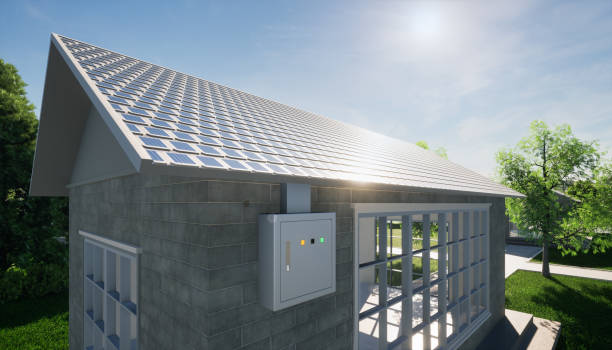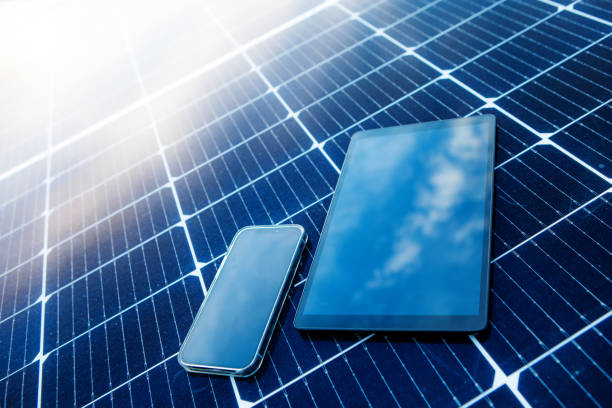
As solar energy adoption continues to rise, homeowners are seeking innovative ways to maximize their investment in renewable energy. Smart electrical upgrades are emerging as a game-changer, enabling better energy management, cost savings, and enhanced sustainability. These upgrades not only optimize solar panel performance but also future-proof homes for evolving energy demands. In this blog, we’ll explore the latest trends, technologies, and benefits of smart electrical systems for solar-powered homes.
Why Smart Electrical Upgrades Are Essential

Traditional electrical systems often fall short when paired with modern solar setups. Issues like inefficient energy distribution and limited load management can prevent homeowners from fully utilizing their solar panels. Smart electrical upgrades address these challenges by offering:
- Real-Time Energy Monitoring: Track energy production and consumption to make informed decisions.
- Load Prioritization: Ensure critical appliances get power during outages or peak usage times.
- Optimized Solar Performance: Seamlessly integrate solar panels with other home systems for maximum efficiency.
According to recent reports, the global smart electrical panel market is expected to grow significantly, driven by the increasing adoption of renewable energy solutions and the need for efficient home electrification.
Key Smart Electrical Upgrades for Solar Homes

1. Smart Electrical Panels
Smart panels are the backbone of modern energy management systems. They allow homeowners to monitor and control their electricity usage remotely via apps or smart devices. For example:
- Savant’s Smart Budget System: Introduced at CES 2025, this system optimizes power output to prevent overloading and eliminates the need for costly utility upgrades.
- Schneider Electric’s Pulse Panel: This integrates solar panels, EV chargers, and battery storage into a single system for seamless energy management.
Benefits:
- Avoid expensive utility service upgrades.
- Automatically switch between solar, battery storage, or grid power based on real-time needs.
2. Energy Storage Systems (Solar Batteries)
Pairing solar panels with a battery storage system ensures that excess energy generated during the day can be stored for nighttime use or emergencies. Advanced batteries like Tesla Powerwall are becoming more accessible, offering:
- Backup power during outages.
- Integration with smart panels for efficient load management.
3. Smart EV Chargers
With the rise of electric vehicles (EVs), integrating smart EV chargers into your solar system is a must. These chargers can:
- Schedule charging during peak solar production hours.
- Reduce dependency on grid electricity by using stored solar energy.
4. AI-Powered Energy Management Systems
Artificial intelligence (AI) is revolutionizing home energy management by analyzing consumption patterns and predicting maintenance needs. These systems:
- Adjust energy usage in real-time based on weather conditions and household habits.
- Provide insights into optimizing energy consumption.
For instance, AI-driven systems can predict high-demand periods and allocate stored solar energy accordingly, ensuring cost savings and efficiency.
Emerging Trends in Solar-Powered Homes

1. Building-Integrated Photovoltaics (BIPV)
BIPV systems integrate solar technology directly into a home’s structure—such as windows, walls, or facades—eliminating the need for traditional rooftop panels. These systems are gaining popularity due to their sleek design and efficient energy production.
2. Solar Roofs and Tiles
Companies like Tesla are leading the way with aesthetically pleasing solar roofs that double as traditional roofing materials while generating electricity. These designs eliminate the visual bulk of traditional panels.
3. Enhanced Energy Storage Solutions
Energy storage technology is advancing rapidly, making it easier for homeowners to store excess solar power for later use. Affordable high-capacity batteries are expected to become standard in residential solar setups by 2025.
Benefits of Smart Electrical Upgrades
- Energy Independence: Reduce reliance on the grid by maximizing renewable energy usage.
- Cost Savings: Lower electricity bills through optimized energy management.
- Sustainability: Minimize your carbon footprint by efficiently utilizing solar power.
- Resilience: Maintain power during outages by prioritizing critical circuits.
Real-Life Examples

Example 1: Homeowner Using SPAN Panel
A homeowner avoided a costly utility upgrade by installing a SPAN panel that intelligently managed their home’s electrical loads during peak usage times.
Example 2: EV Integration with Smart Panels
An EV owner integrated their charger with Schneider Electric’s Pulse Panel to schedule charging during peak solar hours, saving hundreds annually on electricity costs.
Frequently Asked Questions (FAQs)
- What is a smart electrical panel, and how does it work?
A smart panel monitors and controls your home’s circuits remotely while optimizing energy usage based on real-time data. - Do I need a smart panel if I already have solar panels?
While not mandatory, a smart panel significantly enhances the efficiency and flexibility of your solar system by managing loads intelligently. - How much do smart electrical upgrades cost?
Costs vary based on complexity but generally range from $2,000 to $10,000. - Can smart upgrades help during power outages?
Yes, they prioritize essential circuits to ensure critical systems remain operational during outages. - Are these upgrades compatible with older homes?
Most systems can be retrofitted into older homes with some modifications.
Conclusion
Smart electrical upgrades are transforming how we manage energy in homes with solar panels. From advanced smart panels to AI-driven management systems, these technologies offer unparalleled benefits in terms of efficiency, cost savings, and sustainability. As we move toward a greener future, investing in these upgrades is not just an option—it’s a necessity.
For more insights into creating an eco-friendly home, visit Smart Homes Bee.